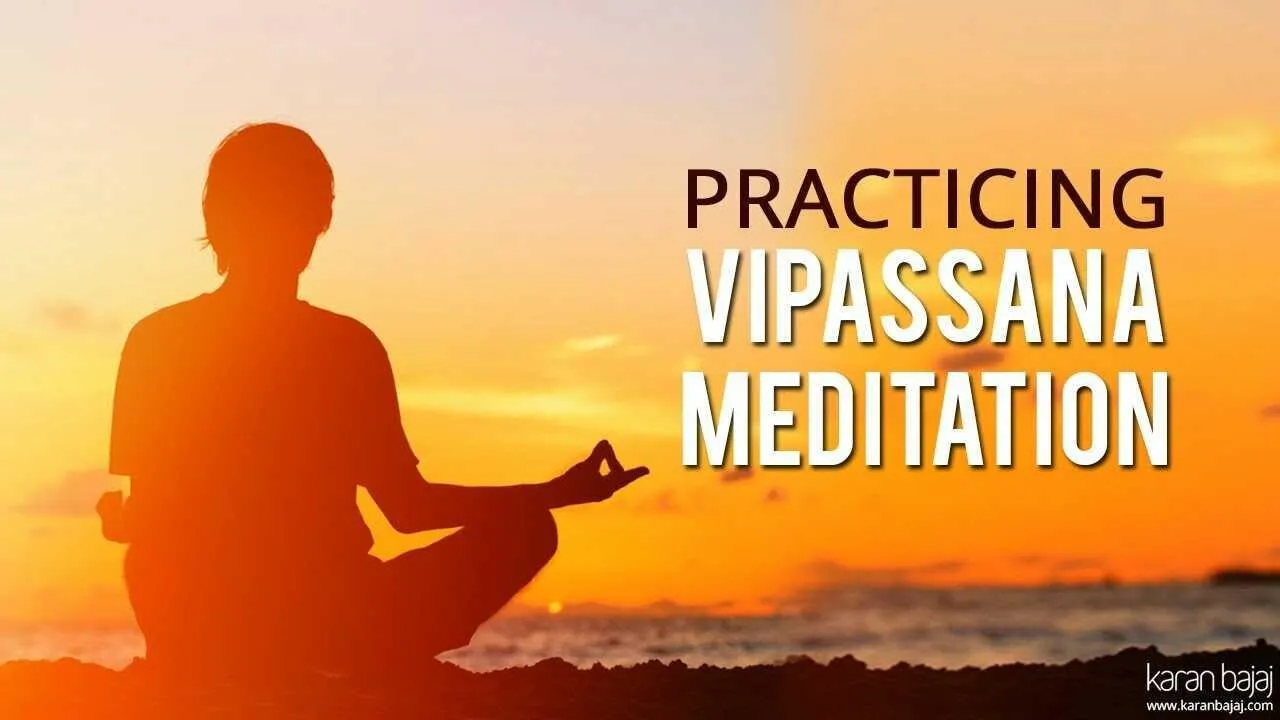Vipassana Meditation ……An Introduction.

Everyone seeks peace and harmony, because this is what we lack in our lives. From time to time we all experience agitation, irritation, disharmony. And when we suffer from these miseries, we don't keep them to ourselves; we often distribute them to others as well. Unhappiness permeates the atmosphere around someone who is miserable, and those who come in contact with such a person also become affected. Certainly this is not a skillful way to live.
We ought to live at peace with ourselves, and at peace with others. After all, human beings are social beings, having to live in society and deal with each other. But how are we to live peacefully? How are we to remain harmonious within, and maintain peace and harmony around us, so that others can also live peacefully and harmoniously?
In order to be relieved of our misery, we have to know the basic reason for it, the cause of the suffering. If we investigate the problem, it becomes clear that whenever we start generating any negativity or impurity in the mind, we are bound to become unhappy. A negativity in the mind, a mental defilement or impurity, cannot coexist with peace and harmony.
What Vipassana is not:
ï It is not a rite or ritual based on blind faith.
ï It is neither an intellectual nor a philosophical entertainment.
ï It is not a rest cure, a holiday, or an opportunity for socializing.
ï It is not an escape from the trials and tribulations of everyday life.
What Vipassana is:
ï It is a technique that will eradicate suffering.
ï It is a method of mental purification which allows one to face life's tensions and problems in a calm, balanced way.
ï It is an art of living that one can use to make positive contributions to society.
Vipassana means to see things as they really are, is a way of self-transformation through self-observation. It focuses on the deep interconnection between mind and body, which can be experienced directly by disciplined attention to the physical sensations that form the life of the body, and that continuously interconnect and condition the life of the mind. It is the observation-based, self-exploratory journey to the common root of mind and body that dissolves mental impurity, resulting in a balanced mind full of love and compassion.
It is one of India's most ancient techniques of meditation. It was rediscovered by Gotama Buddha more than 2500 years ago and was taught by him as a universal remedy for universal ills, i.e., an Art Of Living. This non-sectarian technique aims for the total eradication of mental impurities and resultant of highest happiness in life.
The scientific laws that operate one's thoughts, feelings, judgements and sensations become clear. Through direct experience, the nature of how one grows or regresses, how one produces suffering or frees oneself from suffering is understood. Life becomes characterized by increased awareness, non-delusion, self-control and peace.
The technique is taught at ten-day residential courses during which participants follow a prescribed Code of Discipline, learn the basics of the method, and practice sufficiently to experience its beneficial results.The course requires hard, serious work.
The entire practice is actually a mental training. Just as we use physical exercises to improve our bodily health, Vipassana can be used to develop a healthy mind. Of course, the results come gradually through continued practice. It is unrealistic to expect all problems to be solved in ten days. Within that time, however, the essentials of Vipassana can be learned so that it can be applied in daily life. Because it has been found to be genuinely helpful, great emphasis is put on preserving the technique in its original, authentic form. It is not taught commercially, but instead is offered freely. No person involved in its teaching receives any material remuneration. There are no charges for the courses - not even to cover the cost of food and accommodation. All expenses are met by donations from people who, having completed a course and experienced the benefits of Vipassana, wish to give others the opportunity to benefit from it also.
Courses are given in numerous meditation centres and at non Centre course locations. Each location has its own schedule of courses. An application for admission to each of these courses is required and is done by visiting the website www.dhamma.org or by calling the centers near by.
“Do not believe in what you have heard; do not believe in
traditions because they have been handed down for many
generations; do not believe in anything because it is rumoured
and spoken by many; do not believe merely because a written
statement of some old sage is produced; do not believe in
conjectures; do not believe in that as truth to which you
have become attached from habit; do not believe merely the
authority of your teachers and elders. After observation and
analysis, when it agrees with reason and is conducive to the good and gain of one and all, then accept it and live up to it.”
All sincere people are welcome to join a Vipassana course to see for themselves how the technique works and to measure the benefits. All those who try it will find Vipassana to be an invaluable tool with which to achieve and share real happiness with others